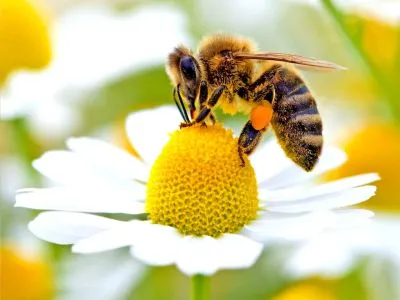
Nectar
Honey bees have a nectar sack that holds the nectar that is taken from the blossom. Back at the hive, the nectar is spewed and set into the honeycomb cells. Nectar is the honey bees' wellspring of sugars.
Dust
Dust is gathered in the meantime. It is grabbed when the hair on the honey bees' bodies rubs the male anthers of the blooms and is assembled into dust sacks on the creepy crawly's legs. Dust, rich in amino acids, is nourished to the creating hatchlings back at the hive.
Fertilization
Not the majority of the dust makes it back to the hive. Since the honey bees visit one bloom after another, dust is rubbed off on the female bit, the pistil, of the following blossom went to. Honey bees return to similar blooms until the point that the nectar is gone, expanding odds of fertilization.
Preparation
Once the honey bee has brushed the dust grains onto the pistil, the grain moves down the style, which prompts the ovary. There the ovules, which will move toward becoming seeds, are treated.
Dynamic Periods
Honey bees are most dynamic in the last piece of spring and in the late spring. Most plants tend to blossom amid this period.
Fun Fact
Honey bees can't see the shading red, so once in a while visit red blossoms. They do see bright light so they can see designs on blossoms that we can't.